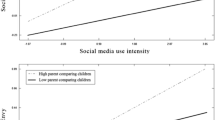Abstract
A study of 210 fourth, sixth, eighth, and tenth graders and adults was conducted to determine developmental trends in both destereotyping of traditionally gender-typed activities and preferences for those activities, and to compare activity preferences of tomboys with other females and with males at different ages. Tenth graders destereotyped less than the other age levels. Additionally, female subjects destereotyped traditionally boys' activities more than girls' activities and more than male subjects. Although nontomboys and boys showed a preference for gender-traditional activities, tomboys preferred traditional girls' and boys' activities equally. Self-defined tomboys do not reject traditionally female activities; instead, they expand their repertoire of activities to include both gender-traditional and nontraditional activities. It is suggested that girls who are able to transcend gender-role behavior in childhood may be the ones who will grow into androgynous adult women.
Similar content being viewed by others
References
Bem, S. L. The measurement of psychological androgyny. Journal of Consulting and Clinical Psychology, 1974, 42, 155–162.
Bem, S. L., & Lewis, S. A. Sex-role adaptability: One consequence of psychological androgyny. Journal of Personality and Social Psychology, 1975, 31, 634–643.
Bem, S. L., Martyna, W., & Watson, C. Sex-typing and androgyny: Further explorations of the expressive domain. Journal of Personality and Social Psychology, 1976, 34, 1016–1023.
Brown, D. G. Sex-role preference in young children. Psychology Monographs, 1956, 70 (Whole No. 14).
Constantinople, A. Masculinity-femininity: An exception to a famous dictim? In A. G. Bean & J. P. Kaplan (Eds.), Beyond sex-role stereo-types: Readings toward a psychology of androgyny. Boston: Little, Brown, 1976.
DeLucia, L. A. The Toy Preference Test: A measure of sex-role identification. Child Development, 1963, 34, 107–117.
Erikson, E. E. Identity: Youth and crisis. New York: Norton, 1968.
Fagot, B. I., & Littman, E. Stability of sex role and play interests from preschool to elementary school. Journal of Psychology, 1975, 89, 285–292.
Fagot, B. I., & Patterson, G. R. An in vivo analysis of reinforcing contingencies for sex-role behavior in the preschool child. Developmental Psychology, 1969, 1, 563–568.
Flerx, V. C., Fidler, D. S. & Rogers, R. W. Sex role stereotypes: Developmental aspects and early intervention. Child Development, 1976, 47, 998–1007.
Hartley, R. E., & Hardesty, F. P. Children's perceptions of sex roles in childhood. Journal of Genetic Psychology, 1964, 105, 43–51.
Haugh, S. S., Hoffman, C. D., & Cowan, G. The eye of the very young beholder: Sex-typing of infants by young children. Child Development, 1980, 51, 598–600.
Hemmer, J. D., & Kleiber, D. A. Tomboys and sissies: Androgynous children? Sex Roles, 1981, 7, 1205–1212.
Hyde, J. S., Rosenberg, B. G., & Behrman, J. T., Tomboyism. Psychology of Women Quarterly, 1977, 2, 73–75.
Kohlberg, L., & Zigler, E. The impact of cognitive maturity on sex-role attitudes in the years four to eight. Genetic Psychology Monographs, 1967, 75, 89–165.
Kuhn, D., Nash, S. C., & Brucken, L. Sex role concepts of two- and three-year-olds. Child Development, 1978, 49, 445–451.
Maccoby, E. E., & Jacklin, C. N. The psychology of sex differences. Stanford: Stanford University Press, 1974.
Masters, J. C., & Wilkinson, A. Consensual and discriminative stereotyping of sex-type judgments by parents and children. Child Development, 1947, 47, 208–217.
Money, J., & Ehrhardt, A. A. Man and woman; boy and girl. Baltimore: Johns Hopkins University Press, 1972.
Orlofsky, J. L., & Windle, M. T. Sex-role orientation, behavioral adaptability, and personal adjustment. Sex Roles, 1978, 4, 801–812.
Rebecca, M., Hefner, R., & Oleshansky, B. A model of sex-role transcendence. In A. G. Bean & J. P. Kaplan (Eds.), Beyond sex-role stereotypes: Readings toward a psychology of androgyny. Boston: Little, Brown, 1976.
Rosenberg, B. G., & Sutton-Smith, B. A revised conception of masculine-feminine differences in play activities. Journal of Genetic Psychology, 1960, 96, 165–170.
Ryan, S. M., & Castleman, J. Children's knowledge and use of sex stereotypic terms. San Francisco, August 1977. Paper presented at the meeting of the American Psychological Association, 1977.
Saghir, M. T., & Robins, E. Male and female homosexuality: A comprehensive investigation. Baltimore: Williams & Wilkins, 1973.
Serbin, L. A., Connor, J. M., Burchardt, C. J., & Citron, C. C. Effects of peer presence on sex-typing of children's play behavior. Journal of Experimental Child Psychology, 1979, 27, 303–309.
Shepard, W. O., & Hess, D. T. Attitudes in four age groups toward sex role division in adult occupations and activities. Journal of Vocational Behavior, 1975, 6, 27–39.
Sisson, L. H. Sex-role interests and social competence in young children (Doctoral dissertation, UCLA, 1975). Dissertation Abstracts International, 1974, 34, 4006.
Spence, J. T., & Helmreich, R. L. Masculinity and femininity: Their psychological dimensions, correlates and antecedents. Austin: University of Texas Press, 1978.
Stein, A. H., & Smithells, J. Age and sex differences in children's sex-role standards about achievement. Developmental Psychology, 1969, 1, 252–259.
Urberg, K. A. Sex-role conceptualizations in adolescents and adults. Developmental Psychology, 1979, 15, 90–92.
Author information
Authors and Affiliations
Rights and permissions
About this article
Cite this article
Plumb, P., Cowan, G. A developmental study of destereotyping and androgynous activity preferences of tomboys, nontomboys, and males. Sex Roles 10, 703–712 (1984). https://doi.org/10.1007/BF00287381
Issue Date:
DOI: https://doi.org/10.1007/BF00287381




